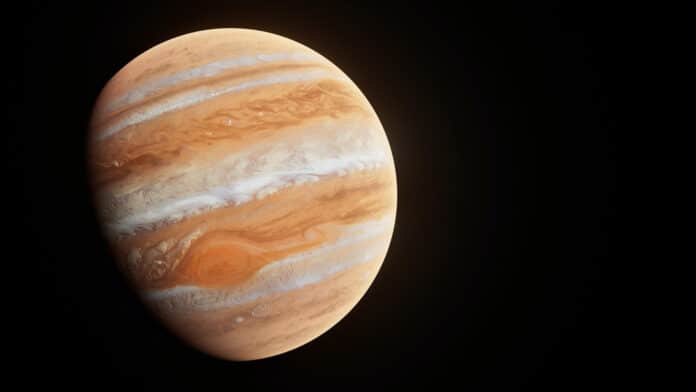Using NASA’s Transiting Exoplanet Survey Satellite (TESS) and the SPECULOOS South Observatory, an international team of scientists has discovered an unusual Jupiter-sized planet called TOI-4860 b. The planet is found to be orbiting a low-mass star called TOI-4860, which is located in the Corvus constellation.
The planet is unusual for two reasons:
- Stars with such low mass are unexpected to host planets.
- The planet appears to be particularly enriched by heavy elements.
The planet was first discovered by NASA’s Transiting Exoplanet Survey Satellite as a drop in brightness while transiting in front of its host star. Still, more information was needed to determine that it was a planet.
The team confirmed the planetary nature by measuring the planetary signal at various wavelengths using the SPECULOOS South Observatory, which is situated in Chile’s Atacama Desert.
The planet was also spotted shortly before and after it disappeared below its host star, and the scientists saw no difference in light, indicating that the planet was not emitting any. Finally, the team used the Subaru Telescope in Hawaii to work with a Japanese team. To completely confirm the planet’s mass, they measured it collectively.
A group of Ph.D. students working on the SPECULOOS project took the initiative to track this star and confirm its planet.
George Dransfield, one of those Ph.D. students, who recently submitted her thesis at the University of Birmingham, explains: “Under the canonical planet formation model, the less mass a star has, the less massive is the disc of material around that star.
“Since planets are created from that disc, high-mass planets like Jupiter were widely expected not to form. However, we were curious about this and wanted to check planetary candidates to see if it was possible. TOI-4860 is our first confirmation and the lowest mass star hosting such a high mass planet.”
Amaury Triaud, Professor of Exoplanetology at the University of Birmingham, who led the study, said: “A hint of what might have happened is hidden in the planetary properties, which appear particularly enriched in heavy elements. We have detected something similar in the host star, too, so an abundance of heavy elements likely catalyzed the planet formation process.”
The new gas giant’s orbit around its host star takes around 1.52 days to complete; however, because it is a frigid low-mass star, the planet can be called a “Warm Jupiter.” Astronomers who want to expand on their preliminary findings and discover more about how these kinds of planets are generated are particularly interested in this subclass.
Mathilde Timmermans, another student of the SPECULOOS project working at the University of Liege in Belgium, concludes: “Thanks to its very short orbital period and the properties of its host star, the discovery of TOI-4860 b provides a brilliant opportunity to study the atmospheric properties of a warm Jupiter and learn more about how gas giants are formed.”
Journal Reference:
- Amaury H M J Triaud, Georgina Dransfield, Taiki Kagetani, Mathilde Timmermans, Norio Narita, Khalid Barkaoui et al. An M dwarf accompanied by a close-in giant orbiter with SPECULOOS. Monthly Notices of the Royal Astronomical Society: Letters. DOI: 10.1093/mnrasl/slad097
